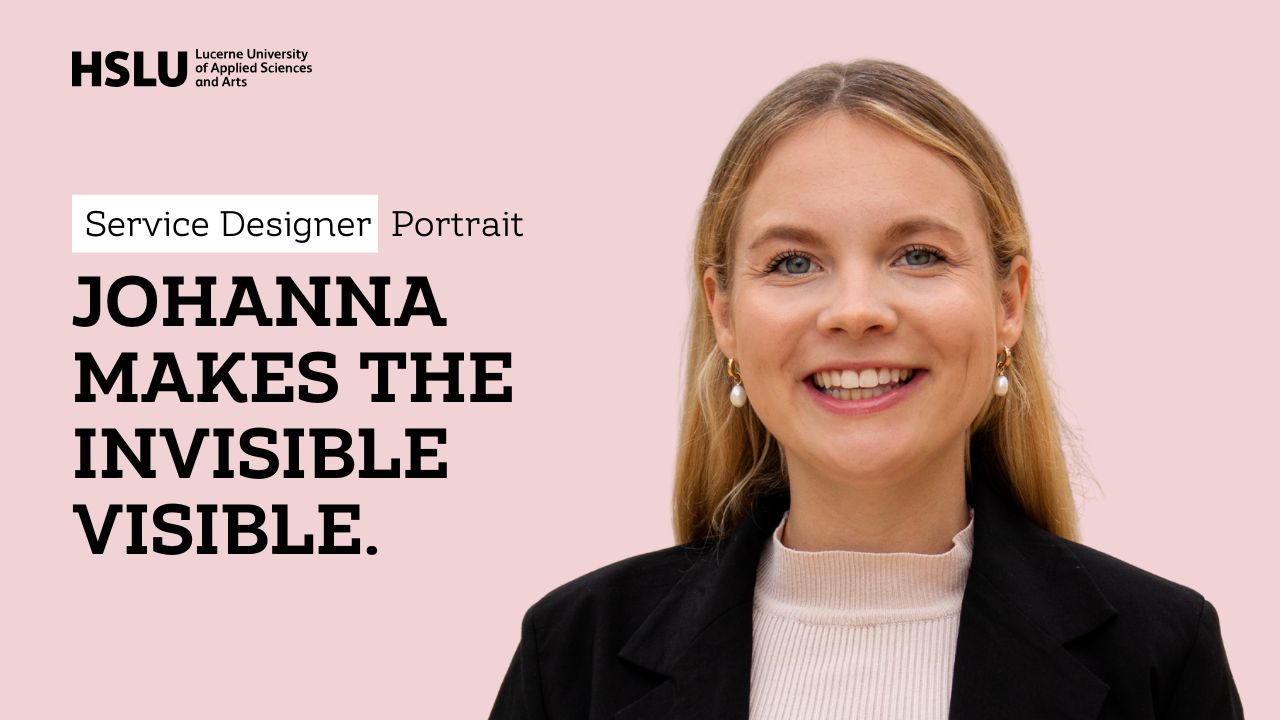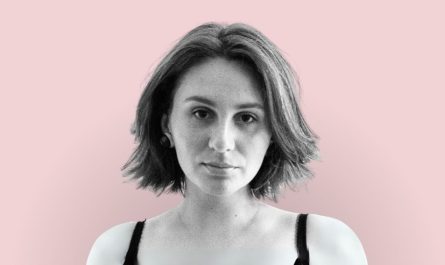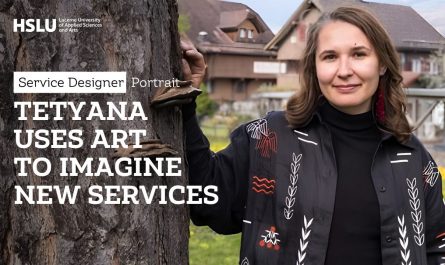In this interview Johanna Pfeffer shares her personal Service Design journey and how her work explores the role of Service Design in the context of the energy transition in Germany. In this 21 minutes conversation Johanna covers the following topics:
- Personal Portrait: Get to meet a Service Designer bridging business and design.
- Energy Transition: See how Service Design enables collaboration and supports the people driving the digital transformation of distribution grids.
- Key skills: Discover the Service Design mindset of openness, co-creation and human-centeredness.
- Master: Discover if you too have the endurance to do a Master in Service Design.
Meet Johanna in video
Connect with Johanna Pfeffer
Discover the Master Service Design program
- Program overview: HSLU Master Service Design
- Ask a question to a student ambassador via a Whatsapp text message: +41 79 572 30 93
Interview highlights
Prefer reading than watching a video? Here some highlights from the interview that have been shortened and adapted for a smoother reading experience. You can find the full transcript of the interview at the bottom of this article.
How did you discover Service Design?
I was looking for a discipline that bridges the gap between business and design. I originally started with graphic design and visual communication in Frankfurt. I’ve worked in several agencies and at the end of the day I was always like, wow, this is a nice design. But what is behind it? How do we sell it, and does it even generate revenue?
This is why I went to Nova School of Business and Economics in Lisbon to study the Master’s in Management. I first read about Service Design when I was researching about my master’s thesis topic, where I wanted to prove that we need a community garden at Nova SBE. One key pillar was co-creation. I found similarities with Service Design and said, I’m 24, why should I not do a second master degree? That’s why I’m here.
What do you like about Service Design?
I think two disciplines have important things to consider. But I think it’s good to consider the business side and the design part as well. And I think by combining both, you’re gonna be really successful.
Business oriented people are really logical and have a linear way of problem solving. I think design disciplines—and I would consider Service Design in the middle of it—consider iteration loops. Maybe you go one way back. But at the end of the day, I think by combining those ways of exploring a solution could really add value to organizations and also to other problems.
What’s your Service Design project focus?
My master thesis is about how we can support distribution network operators—those that are responsible that we have the energy in our socket—during the energy transition by helping them visualize the steps of digitalizing their grid.
It’s a really complex topic. It’s around energy transition. We have high CO2 emissions and therefore we have goals to reduce CO2 emissions. Basically we’re in a transformation from coal based power plants to renewable energies.
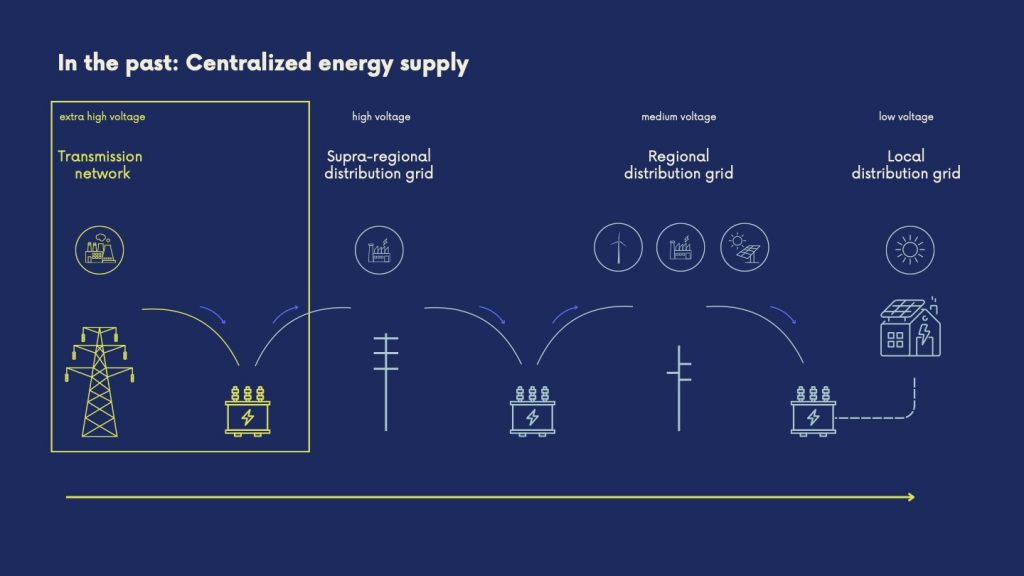
In the past we had a centralized energy supply system, which means it was like a one-way street from the transmission network. The energy went directly to the local distribution grid, to the consumers. As we are transforming to renewables, we have a bidirectional energy flow at this stage, and it’s a decentralized energy supply system.
The renewables need to be integrated into regional distribution grid. A consumer wants a solar panel—of course the consumer thinks well, great, I’m participating to the energy transition. But the responsibility still lies in the hands of the distribution network operator that needs to integrate the renewables in the local grid.
Therefore, the distribution network operators need to digitalize their grid. Some haven’t digitalized their transformer stations yet. This is why transparency is really needed.
As a prototype, I created a visualization of layers on how to digitalize the network. The idea is that distribution network operators can look at the rollup banner placed in a real field and can find themselves—where are they standing at the moment? Are they in layer one or are they in layer four, and what do they really need?
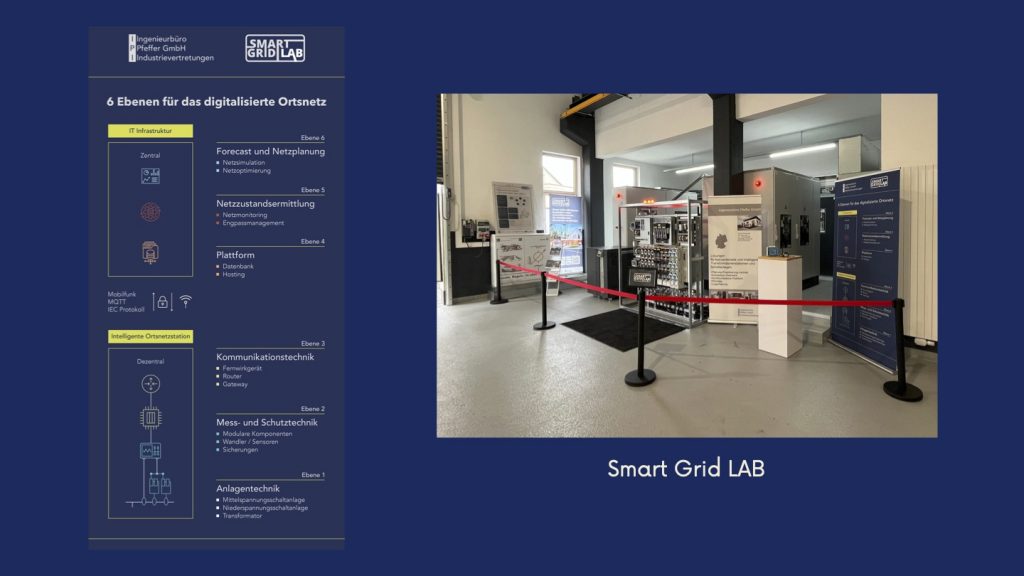
This prototype really served as a tool to get engaged with different stakeholders at events and to really exchange what are your needs at the moment and where can we help.
What about sector coupling?
Sector coupling is a really important term in this field. We do not only have the energy transition, we also have the heat transition and the mobility transition—for example, electric cars, and of course they also need energy.
This is where Service Design comes in. We need to consider the whole system of challenges and the interconnections within it. The energy transition is connected with the heat transition and the mobility transition. Overall in the future, we will need more energy because of those transitions.
What are key lessons you learned about Service Design?
When thinking about Service Design, I always have those three pillars in mind:
First, see the whole challenge holistically—really seeing the system and the ecosystem behind it, and interconnections. I think this is one important key learning. Don’t look at the challenges solely, but consider the wider system.
Second, co-create—really integrate the users in our research and solution finding. Service Design should be user centered. Personally I prefer the word human centered because I think this is also one big learning. Those are not users, those are humans. And when we talk about humans, we talk about interactions and disciplines like sociology or psychology.
Third, consider if your organization is Service Design ready. I think you should always consider: is my organization Service Design ready? When you stay in your Service Design bubble and the design environment, you think it’s clear what Service Design is. We all know that, right? Maybe the people and other stakeholders within different fields are unaware.
I think another learning is to start with a workshop: What is Service Design and what added value will we have with going with a Service Design mindset? I’m not using it as a methodology. For me, it’s really having a Service Design mindset to be open, to be friendly, to co-create and putting the human in the center.
To whom do you recommend the Master in Service Design?
I can just talk about my own experience. I think it’s for people that are interested in business and design and maybe want to bridge the gap. I also think it’s for students that are really curious to learn more about Service Design and the different fields.
At HSLU we do not only have Service Design. We also have eco social design and interaction design, so this might be interesting to connect with other disciplines as well.
Also, you really need endurance. For Service Design you really dive deep into the topic and need to consider that there might be some complexity. So you really also need to read a lot, to do some research to really understand the challenge you want to tackle.
What about having an industry partner?
Even though it’s not a precondition, I’ve made positive experiences with having an industry partner because I’ve been working before in the organization. I could see the challenges that might arise. I could talk to stakeholders and then I had the idea, oh, we could change something here.
I think it’s a great opportunity to test your prototypes directly in the field because at the end of the day, we are serving the target group and it makes sense to design something that can be implemented in the end. So definitely yes, I would recommend it.
What can people do for you?
I see myself as a strategic design consultant. I will still work in this field. I will also continue working in our family business, supporting digitalizing distribution grids and trying to make an impact as a designer.
I’m always open for freelance work and I’m happy to connect on LinkedIn. If you like the topics that I’m talking about and want to exchange, please text me. You could also have a look at my online portfolio at johannapfeffer.com.
In Germany, we want to be climate neutral by 2045. It’s a marathon, not a sprint. This transformation also needs to consider the people that are affected with it. So I think there’s a strong potential for Service Design in this field.
Made with AI help
This blog article is based on the transcription of the recorded video interview and was then turned into a blog post using Notion AI and Claude Sonnet 4.5. The article was then reviewed, corrected and improved by hand by the author.
Full transcript
Video transcript
This transcript was automatically Generated using Descript and therefore contains mistakes and creative turns of phrases.
Teaser
Johanna: Don’t look at the challenges, solely, but consider the wider system.
I was looking for a discipline that bridges the gap between business and design. I’ve worked in several agencies and at the end of the day I was always like, wow, this is a nice design. But what is behind it?
My master thesis is about how we can support distribution network operators, those that are responsible, that we have the energy in our socket, during the energy transition by helping them, tovisualize the steps of digitalizing, their grid.
In this field, we do not only have the energy transition, we also have the heat transition and the mobility transition. This is where Service Design comes in again. We need to consider the whole system of challenges and the interconnections within it.
In Germany, we want to be climate neutral by 2045. It’s a marathon, not a sprint. This transformation also needs to consider the people that are affected with it. So I think there’s a strong potential for Service Design in this field.
For me, it’s really, having a Service Design mindset to be open, to be friendly, to co-create and putting the human, in the center.
You really need endurance for Service Design. You really, dive deep into the topic and need to consider that there might be some complexity.
I see myself as a strategic design consultant. I will still work in this field. I will also, continue working in our family business, supporting digitalizing distribution grids and, trying to make an impact as a designer.
Daniele: Welcome again to this series where we do portraits of Service Design learners within the Master Service Design of the HSLU. And today I’m joined by two lovely, brilliant, smart people. The first of which is obviously Johanna. Welcome, Jo.
Johanna: Hello. thank you so much for inviting me. I’m super excited, to share with you my experiences of Service Design.
Daniele: Thank you so much for joining and we have, my partner in crime, Andy with us. Hi Andy.
Andy Polaine (he/him): Hi, lovely to see you both again.
Daniele: it’s such a pleasure to have you both here I’d like to start directly with you, Johanna.
Johanna’s Service Design Journey
Daniele: Can you tell us a little bit around who you are and how you discovered Service Design and why of all the beautiful things
in the world, did you choose this specific thing to learn further?
Johanna: Yes. So for everyone, I’m Johanna and I’m studying, Service Design. I was, quite interested in Service Design as I was looking for a discipline that bridges the gap between business and design. I originally, started with graphic design and visual communication in Frankfurt.
yes, I’ve worked in several agencies and at the end of the day I was always like, wow, this is a nice design. but what is behind it? how do we sell it, and does it even generate revenue? This is how I figured out that I want to study a Master’s in management This is why I went to another School of Business and Economics and, went to Lisbon to actually study management. I had both, the management part and the design part. I, first read, about Service Design when I was researching my project, for my master thesis, where I wanted to prove that we need a community garden. At No School of Business and Economics and yeah, this is how it all started. one key pillar was co-creation. I found similarities with Service Design and said, I’m 24, why should I not do a second master degree? that’s why I’m here.
Daniele: it feels to me that you have studied these two very different things and that now through this second master, you’re trying to blend those, mix them together. Is that the intention behind this choice?
Johanna: Yes. I think this is, actually the point, to bring those two things together because, I think two disciplines, have important, things to consider. but I think it’s, good to consider the business side and the design part as well. And I think by combining, both, you’re gonna be really successful.
Andy Polaine (he/him): I’ve just been teaching, business design last week, to the master student. And, you know, my, my phrase of there is always that it’s the, the other side of the coin of Service Design. Without it, you just have a bunch of concepts. you know, are nice, but they, they have to be able to actually be, implemented somewhere.
Johanna’s Service Design project
Andy Polaine (he/him): Maybe you could tell us a little bit about your project. you’ve taken something very contemporary, very important, but also really complex.
Johanna: I think it’s a really complex topic. It’s around, energy transition my master thesis is about how we can support distribution network operators. those are the people that are responsible, that we have the energy in our socket, during the energy transition by helping them, to yeah, visualize the steps of digitalizing, their grid.
therefore, I want to share some slides with you. really dive deep into the topic that, yeah, you get the red line in it.
you probably know we have, high CO2 emissions and therefore we have goals to reduce, CO2 emissions. So, basically we’re, in a transformation of, coal based, power plants to renewable energies. And, um, with this transition, there come a lot of challenges and I prepared, slides, that visualizes the, yeah, actually the, what has changed, because in the past we had a centralized energy supply system, which means it was like a one-way street from the transmission network.
The energy went directly to the local distribution grid, to the consumers. As we are, transforming to our renewables, we have a bidirectional energy flow at this stage, and it’s a decentralized energy supply system. But of course, the renewables need to be integrated into regional distribution grid. So, this means, a consumer wants a solar panel, of course the consumer thinks well, great, I’m, participating to the energy transition. the responsibility, still lies in the hands of the distribution network operator that needs to integrate the renewables in the local grid. Therefore, the distribution network operators need to digitalize their grid. it’s a really complex topic and we often start with the consumers as we, can identify with them. We also want to integrate renewables. But I think the lever, stays within the distribution network operators that, yeah, need to make it possible. So as a Prototype, I created a visualization, of layers. How to digitalize the, the network? it’s in German, but, the idea is that distribution network operators can look at the rollup banner placed in a real field and can find themselves, where are they standing at the moment?
Are they in layer one or are they in layer four, and what do they really need This, Prototype really served, as a tool to, get engaged, with different stakeholders at events and to really exchange what are your needs at the moment and where can we help. I’m not an engineer.
Andy Polaine (he/him): I’m not a technical expert, and I developed this Prototype with, a multidisciplinary team. But I think it was quite interesting, to see, by, visualizing complexity, we, have the possibility to really have great discussions on what is really needed. I was quite surprised when you, first introduced the topic at how. Analog and blind the network distribution operators are. you were describing that, people will have seen those little kind of substations or those little gray buildings around the place where there are, where, some of the distributions happening.
And they’re sort of in the side of a field or something. And one of those can be, on fire and the operator doesn’t know, until the power drops out, right?
Johanna: With my practice partner, with our family business, I have like the. Direct connection, to this field. And, had several talks about this topic and, some of the distribution network operators, already digitalized their transformer stations and, if you consider one distribution network operator has hundreds, transformer stations, they have, a few that are digitalized But of course, you’re right. some of the distribution network operators haven’t digitalized their, transformer stations yet.
This is why, transparency is really needed.
Andy Polaine (he/him): and digitizing means that they are able to sort of monitor all of these things on some kind of dashboard or something Right. Whereas
Johanna: Yes,
Andy Polaine (he/him): I mean, this is the
Johanna: yes.
Andy Polaine (he/him): previously they have not been able to do this.
Johanna: Yes. I think there’s difficulty applying Service Design in this field because it’s super technical.
Andy Polaine (he/him): Hmm.
Johanna: to say it in, easy words. the, transition from hardware to software. And of course with that, there come a lot of, of challenges and, also challenges designers, need to tackle of course.
Andy Polaine (he/him): I understand, it’s not just the fact that you’ve gone from this sort of centralized power station system to this very distributed model of lots of different, power generation devices and forms. you also talked about something called sector coupling. Can you describe that a little bit?
Johanna: sector decoupling is a really important term in this field we do not only have the energy transition, we also have the heat transition and the mobility transition. for example, electric cars and of course they also need energy. this is where Service Design comes in we need to consider the whole system of challenges and the interconnections within it. Like, the energy transition is connected with the heat transition. Of course the mobility transition and overall in the future, we will need more energy because of those transitions.
Andy Polaine (he/him): in what way do you feel Service Design plays a role here or can have a role to play?
Johanna: I think Service Design, plays a crucial role in it, and so far it’s not really explored and, the value in it, Isn’t, widely researched. I really think Service Design, can add value by making, the complexity visible and, to really see those different components that are, are taking part in this whole transition to take it as a complex topic. yeah, to make it easy, understandable, and in the wider context. Of course, I’m, I’m working in an organization, but I also see, a value in, transforming it to the wider public, to also let consumers know what is actually taking place.
Andy Polaine (he/him): there’s a common line I’ve used, With Service Design often, which is about making the visible invisible. Like you sometimes wanna push some stuff that’s been a headache for people front stage and push it backstage. But often it’s the other way around making the invisible visible, energy consumption being one of them, right?
most people have, electricity and gas meters hidden away in a cupboard somewhere, so you have no idea how much you’re using. that was a time when it was just like, well, we want to hide away that sort of dirty stuff. now with things like smart metering, you are bringing that visible again so people can see, oh my God, I’m using all this power and turn some lights off, and all the rest of it.
Johanna: Yes. And I think, at least in Germany, we want to be climate neutral by 2045. it’s a marathon, not a sprint. this transformation also needs to, consider the people that are affected with it. So I think there’s a strong potential for Service Design in this field.
Andy Polaine (he/him): I really liked that part of your project around the people because one of the things that I found interesting was you describe. There’s multiple, not quite operating systems, but multiple different, systems for, the operators to digitize. And some of ’em are holding back because there’s a sort of anxiety about, well, if I make the wrong choice and the wrong investment, and that also feels like that’s, well ripe for some Service Design at least.
Is that the case?
Johanna: The whole topic is about making the right decision because there are budgets behind it, and, this is why. It’s so complex maybe there is no right decision. Maybe we just have to go with the time to see what kind of new products are on the market.
But this is quite technical and I would, give the word to engineers who actually know. what kind of technical, opportunities there are. in terms of Service Design, we can make those products visible and support, the people, by offering a service, that helps them decide on those options.
Johanna’s key Service Design learnings
Daniele: What are your key learnings that you did around Service Design already in the studies, but also in the practice, in the research that you’ve made?
Johanna: When thinking about Service Design, I always have, those three pillars in mind. It’s to see the whole challenge holistically, like really seeing the system and the ecosystem behind it, or interconnections. And I think this is one important key learning. Don’t look at the challenges, solely, but consider the wider system. I also really like about Service Design, that we co-create, that we, really, integrate the users and our research and Solution finding. Service Design should be user centered. personally I prefer the word, human centered because, I think this is also one biggest learning.
those are not users, those are humans. And when we talk about humans, we talk about interactions and. disciplines like, sociology or psychology A, it’s really broad. So, think always considering, to spend time with the humans to really understand their, specific needs. when you’re working, within organ, an organization I think you should always consider is my organization Service Design ready. I think this is one part, that I yeah, wasn’t, aware about because of course, when you stay in your Service Design bubble and the design environment, you think, oh, wow. It’s clear what’s, what is Service Design? We all know that, right? Maybe the people and, other stakeholders within different fields are under aware.
I think one biggest learning is really to start with a workshop. What a Service Design and kind of added value will we have, with going with a Service Design. Mindset, I’m not using it as a methodology. For me, it’s really, having a Service Design mindset to be open, to be friendly, to co-create and putting the human, in the center.
Daniele: This is very strong. we call that with Andy, the leading conversation, bit of Service Design where there is all the crafts, there is all the mindsets, But then there is a lot around, How do you bring all of that, into conversations, one-to-one, during a lunch?
How do you bring all of this knowledge, all of these mindsets? Slowly but surely. especially in-house, there is a lot of culture change. There is a lot of work to be done there and it’s quite beautiful to see how you are also shifting in this approach and going from. This is a craft, aspect to this.
There is a leading the conversation bit, and I’d be curious to hear from you. So you are someone who has worked in graphic design. You’re someone who has worked and explored, management, business management, What makes Service Design special? What are the learnings that you didn’t have yet from graphic design or from management that you discovered through Service Design?
Johanna: I think, for me really the way of thinking because, business people think differently than design people. Business oriented. people are really logical and have a linear way, of problem solving. I think design disciplines and I would consider Service Design like in the middle of it.
yeah, consider iteration loops. Maybe you go, one way back. But, at the end of the day, I think by combining those, of exploring a solution could really, could really add value to organizations and also to other problems. I mean, we do not only, need to consider projects that generate revenue, we also have a lot of social projects.
For example, the Community Garden project that I did in Lisbon, the impact was different, but still really, really valuable.
Who should do a Master in Service Design
Daniele: You are a person that knows extremely well how this master’s in Service Design works and for people who maybe are watching this thinking, should I move to a Master’s? Should I just learn by myself? could you tell us for whom is a master’s in Service Design and more importantly, for whom it is not?
Johanna: I can, just talk about my own experience. I think it’s for people that are interested in business and, design and maybe want to bridge the gap. I also think it’s for students that are really curious to learn more about Service Design and the different fields. at HSLU we do not only have Service Design, We also have eco social design and interaction design, so this might be interesting to connect with, other disciplines as well. Also, you really need endurance because, for Service Design you really, dive deep into the topic and need to consider that. there might be some complexity. So you really also need to read a lot to. To do some research to really understand the challenge you want to tackle.
The power of an industry partner
Andy Polaine (he/him): So, Johanna, you’ve been working for your family business and you still do. and so you automatically kind of came in with, an industry partner. Is this something you’d recommend for other students?
Johanna: Yes, definitely. Even though it’s not a precondition, I’ve made positive experiences with it because I’ve been working, before in the organization. I could see, the challenges that might arise. I could, I talked to stakeholders and then I had idea, oh, we could change something here.
And, also I think it’s a great opportunity to test your prototypes directly in the field because at the end of the day, we are serving the target group and it makes sense to design something, that can be implemented in the end. So definitely yes.
Andy Polaine (he/him): You’re now in your final year, uh, at HSLU in Lucerne, um, for of doing Service Design in your masters. What are the next steps for you and how might people out there in the world who are watching this, help you in some way?
Johanna: I see myself as a strategic design consultant, so, I will still work in this field. I, will also, continue working in our family business, supporting digitalizing distribution grids and, trying to make an impact as, a designer. Other than that I’m always open for freelance work and, I’m happy to connect on LinkedIn.
So you like the topics that I’m talking about and want to exchange, please text me. and you could also have a few at my online portfolio. It’s johanna pha.com yeah, I’m happy to have a chat.
Andy Polaine (he/him): There’s quite a lot of people working in transition design, energy transition. who may have, something to offer or be good to connect with you.
Daniele: Thank you so much, Johanna, for sharing parts of your journey and some of the key learnings you made here.
it’s such a pleasure to have had the chance to speak both with you, Johanna, and with you Andy. Make sure to check, all the work Johanna has done and to connect with her on LinkedIn. Once again, thank you so much Johanna and Andy.
Andy Polaine (he/him): Thank you.
Daniele:
 by
by 